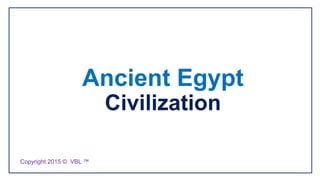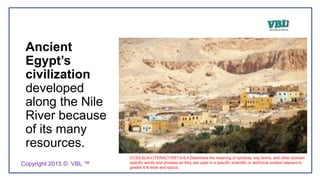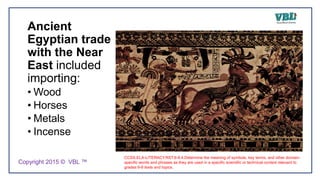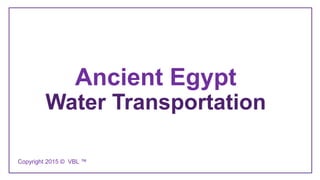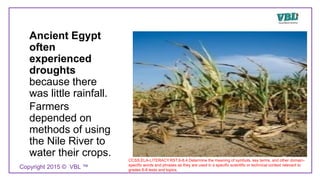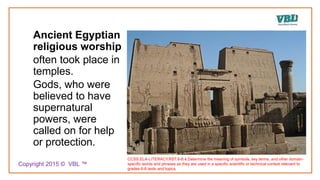Ancient Egypt's civilization developed along the fertile Nile River valley. The river provided water for agriculture and transportation. Ancient Egyptians relied heavily on the Nile River and its seasonal flooding to irrigate their lands and grow abundant crops. They also used the river for transportation and trade. Over time, Ancient Egypt developed a complex society with advanced technologies, trade networks, social hierarchies and religious systems centered around powerful pharaohs.
